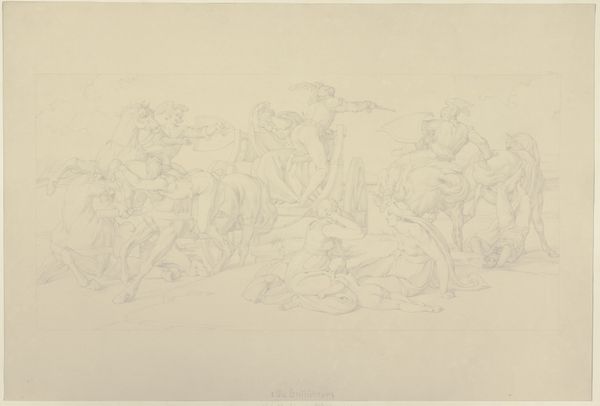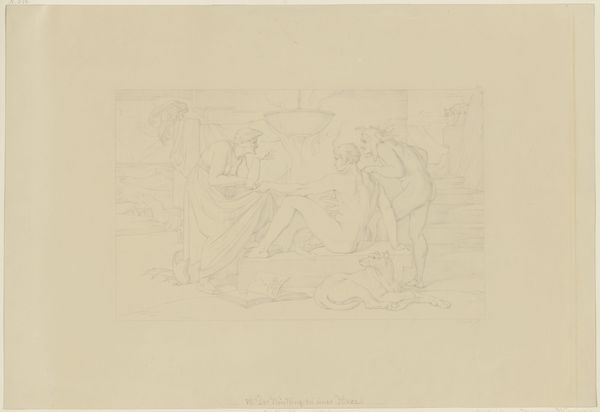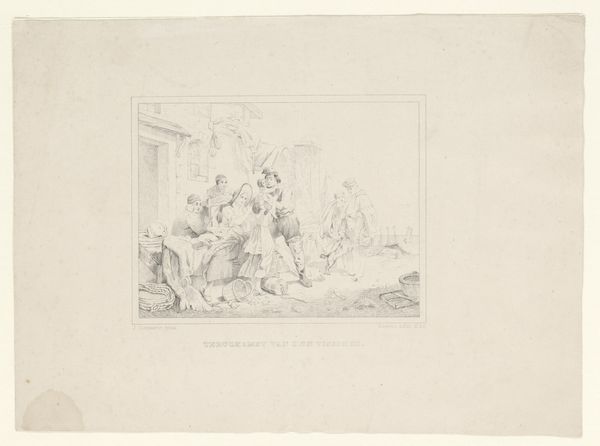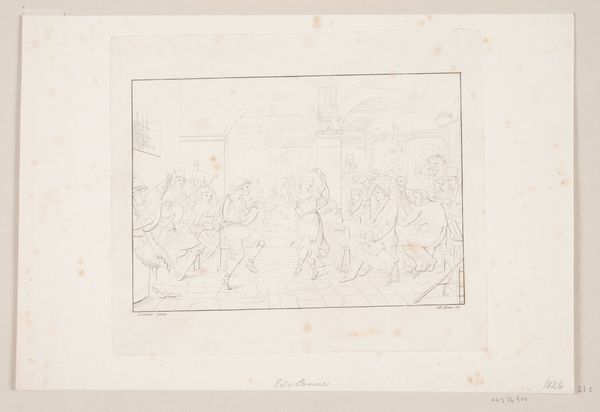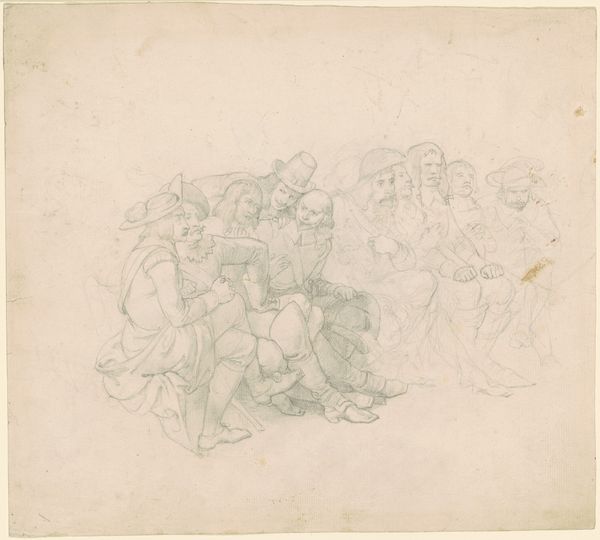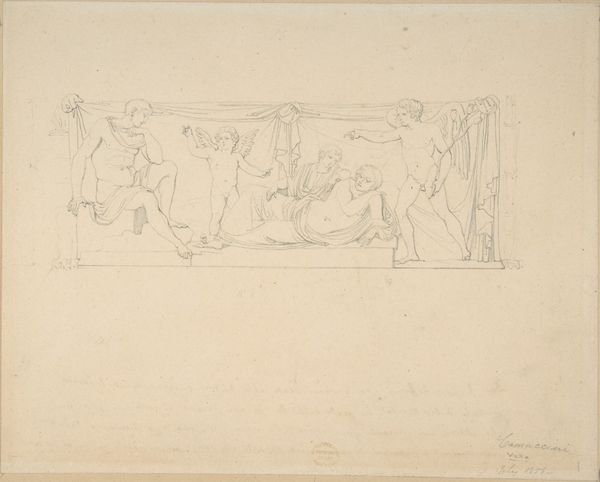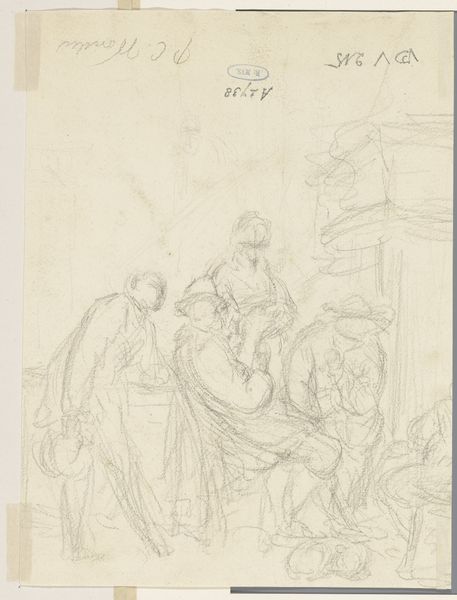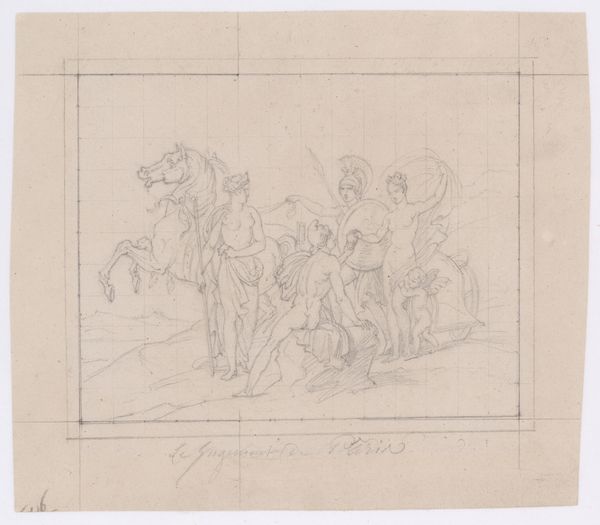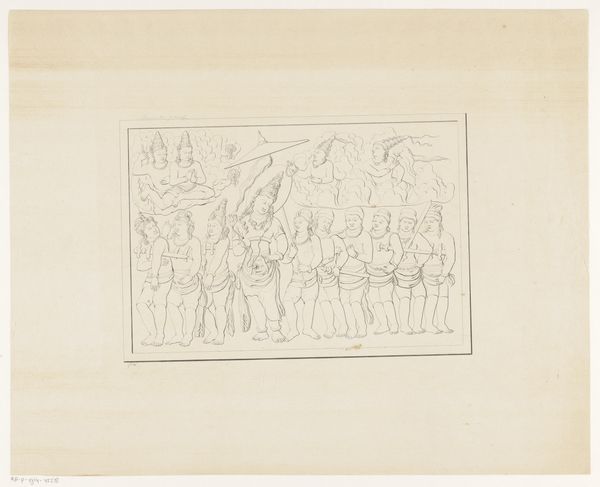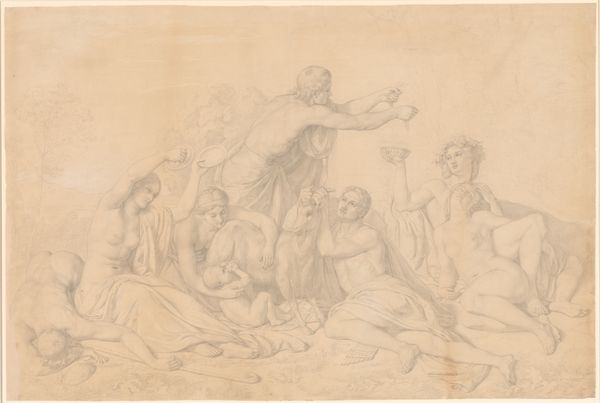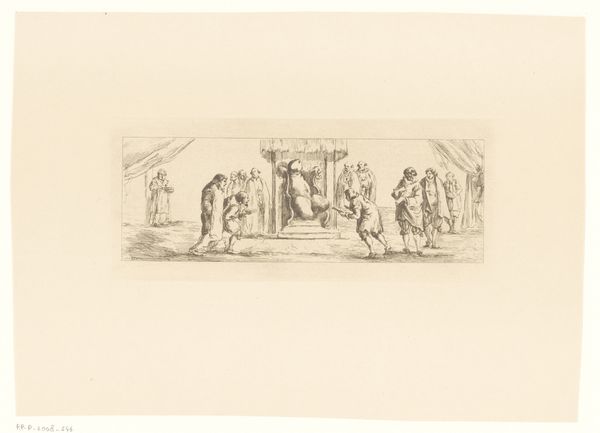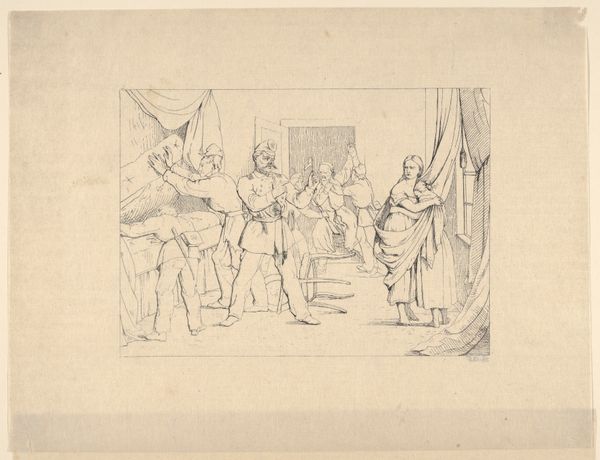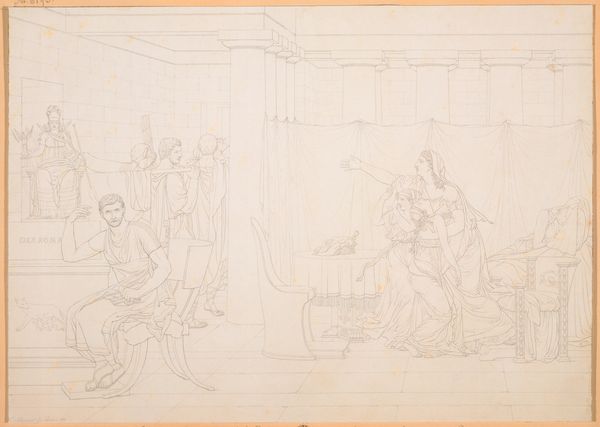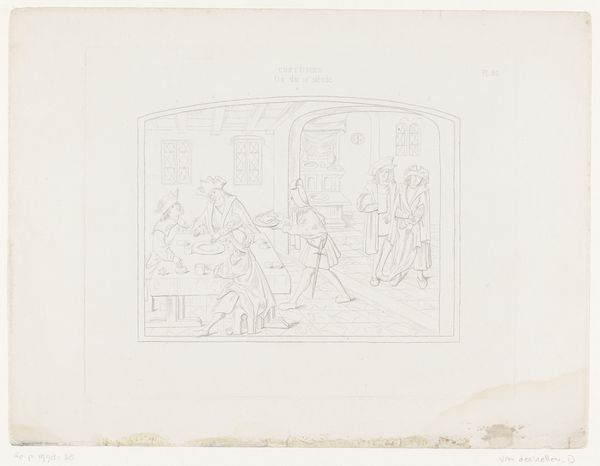
_Aus dem Leben eines Wüstlings__ V. Der Wüstling erhält den Brautkranz seiner seiner Gemahlin zurück 1845
0:00
0:00
drawing, pencil
#
drawing
#
pencil
#
history-painting
#
academic-art
Copyright: Public Domain
Editor: Here we have Bonaventura Genelli's 1845 pencil drawing, "_Aus dem Leben eines Wüstlings__ V. Der Wüstling erhält den Brautkranz seiner seiner Gemahlin zurück", which roughly translates to “From the Life of a Libertine V. The Libertine Receives the Bridal Wreath of His Wife." There’s an intense moment happening here; it’s subtle in pencil, but the body language suggests a major confrontation. What’s your take on this piece? Curator: Well, given the title, this scene is ripe with socio-political commentary. We have this so-called "libertine" being confronted, likely by his wronged wife through the delivery of her bridal wreath. How does Genelli use the setting, this seemingly classical space, to frame the societal role of marriage here? Editor: That’s interesting. I was just seeing it as a personal drama, but the setting... it does give it a broader weight. The architectural details – are they meant to invoke a specific time or set of values? Curator: Absolutely. Think about academic art in the mid-19th century. It's often concerned with moralizing narratives. How might the “libertine’s” actions, contrasted with the setting, challenge or reinforce conventional bourgeois values regarding fidelity and societal expectations for women? Do you see the museum as potentially complicit in either of these actions? Editor: I hadn’t considered the museum’s role, but showcasing this image – is it condemning the libertine or using his story to caution against straying from societal norms? It feels… ambiguous. Curator: Exactly! And it is through this very ambiguity, created by the artist and recontextualized within the museum walls, that art history can prompt broader cultural inquiry. The artwork creates this conversation and the museum amplifies it to their patrons and the world at large. Editor: So, looking beyond just the immediate scene and considering how the artwork circulates and functions in our society—that’s the key? Curator: Precisely. And, perhaps, a humbling perspective on a story of a troubled man in a pencil drawing from the past.
Comments
No comments
Be the first to comment and join the conversation on the ultimate creative platform.
